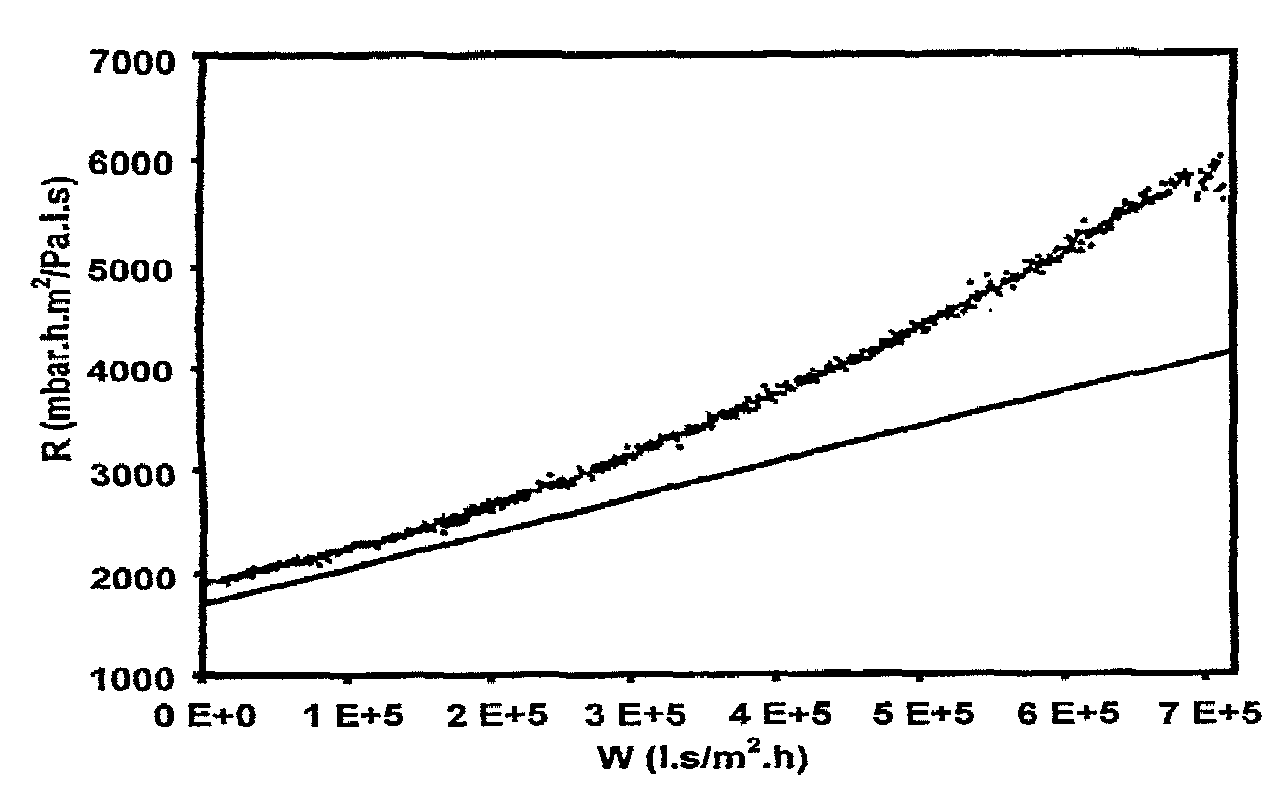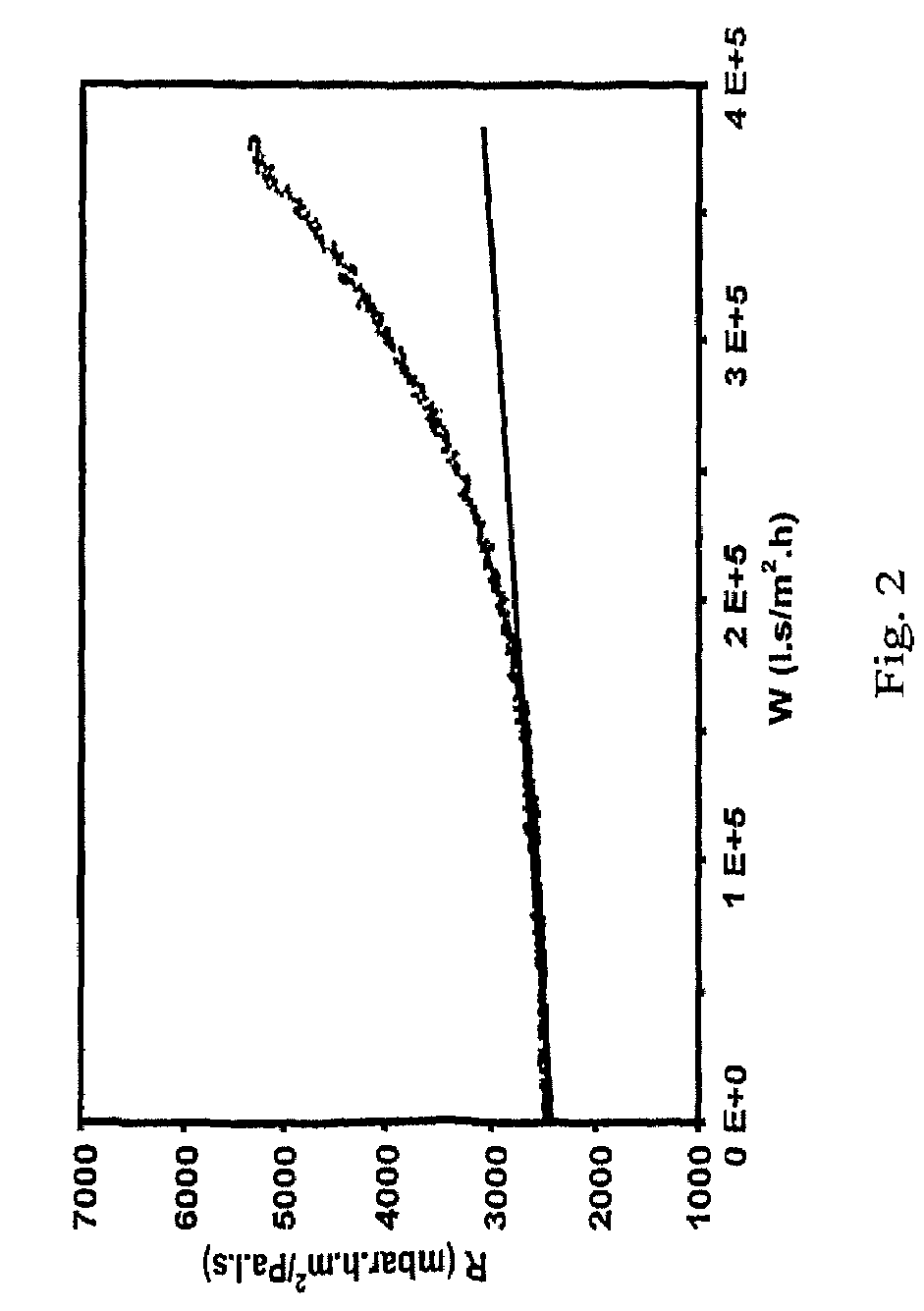Method for monitoring the degree of fouling of a filter
a filter and degree technology, applied in gravity filters, loose filtering material filters, water/sludge/sewage treatment, etc., can solve the problems of material filtered off clogging the pores of the filter to a greater or lesser degree, and achieve the effect of avoiding clogging and avoiding adsorption
- Summary
- Abstract
- Description
- Claims
- Application Information
AI Technical Summary
Benefits of technology
Problems solved by technology
Method used
Image
Examples
Embodiment Construction
[0017]There exists therefore a need of a method with which—the status and the change therein of the filter medium, that is to say the status of the filter and the filter cake can be determined in a simple manner. There is in particular need of such a method in combination with a cleaning process of the filter, with the object of, based on such momentary status and associated, time-dependent changes in such status, becoming able to control, model and optimize important aspects of the filtration process, as mentioned above.
[0018]It is the object of the invention to provide an improved method of obtaining a status characteristic and a change therein of a filtration process (this refers to characteristics of the filter medium as well as the fluid to be filtered and the contaminants contained therein) in a simple manner. An object of the invention is in particular to provide a method which allows a fouling status (and a change therein) of the fouling of a filtration process to be charact...
PUM
| Property | Measurement | Unit |
|---|---|---|
| volume fractions | aaaaa | aaaaa |
| non-fouling | aaaaa | aaaaa |
| driving force | aaaaa | aaaaa |
Abstract
Description
Claims
Application Information
 Login to View More
Login to View More - R&D
- Intellectual Property
- Life Sciences
- Materials
- Tech Scout
- Unparalleled Data Quality
- Higher Quality Content
- 60% Fewer Hallucinations
Browse by: Latest US Patents, China's latest patents, Technical Efficacy Thesaurus, Application Domain, Technology Topic, Popular Technical Reports.
© 2025 PatSnap. All rights reserved.Legal|Privacy policy|Modern Slavery Act Transparency Statement|Sitemap|About US| Contact US: help@patsnap.com



